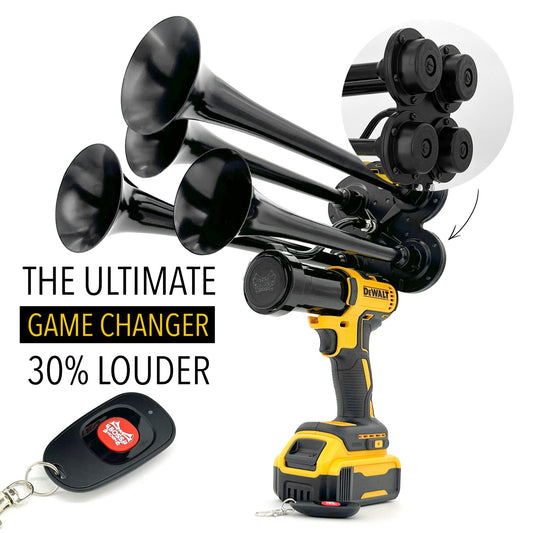Studies show that the average car horn emits a sound level of around 100-110 decibels, loud enough to grab the attention of nearby drivers and pedestrians. The ability to hear a car horn from a considerable distance has been a crucial safety feature since the invention of automobiles. Initially, car horns were manually operated by squeezing a rubber bulb, but modern vehicles are equipped with electric horns that can produce louder and more consistent sounds.
In urban areas with high levels of noise pollution, it is essential for car horns to be audible from a significant distance to alert others of potential dangers on the road. According to traffic safety experts, a car horn should be heard at a minimum distance of 200 feet to effectively communicate with other drivers and pedestrians. This distance allows for ample reaction time for individuals to adjust their driving behavior or move out of harm's way when they hear a horn honking.
In recent years, advances in technology have led to the development of multi-tone car horns that can produce a range of different sounds and frequencies. These sophisticated horns are designed to be more attention-grabbing and can be heard from even further distances, enhancing overall road safety. As vehicles become more technologically advanced, the importance of having a loud and effective car horn continues to be a top priority for manufacturers and consumers alike.
How Far Should a Car Horn Be Heard: Understanding the Importance of Audible Alert Systems
Car horns are essential safety features in vehicles, designed to alert pedestrians and other drivers of potential hazards or emergencies. The distance at which a car horn should be heard is crucial in ensuring that the warning is effective in preventing accidents. Factors such as the volume of the horn, surrounding noise levels, and the speed of the vehicle can all impact how far the sound travels. To explore this topic further, we will delve into the science behind sound propagation and how car manufacturers are working to improve the reach of car horns in modern vehicles.
Car horns are an essential component of every vehicle, serving as an audible warning signal for drivers to alert others on the road. The distance at which a car horn should be heard is a crucial factor in ensuring safety on the roads.
### Legal Requirements
In most countries, there are legal requirements regarding the sound levels of car horns. For example, in the United States, the Federal Motor Vehicle Safety Standards specify that car horns must emit a sound level of at least 100 decibels when measured at a distance of 50 feet.
### Environmental Factors
The distance at which a car horn can be heard can be influenced by environmental factors such as traffic noise, weather conditions, and terrain. In a noisy urban environment, a car horn may need to be louder to be heard at a sufficient distance.
### Design and Placement
The design and placement of the car horn also play a significant role in how far it can be heard. Horns that are strategically placed near the front of the vehicle and have a clear and distinct sound are likely to be heard from a greater distance.
### Importance of Audibility
The audibility of a car horn is crucial in emergency situations where immediate action is required. A horn that can be heard from a significant distance can help prevent accidents and alert other drivers to potential hazards on the road.
### Statistics
According to a study conducted by the National Highway Traffic Safety Administration, car horns are estimated to be heard at an average distance of 200 to 400 feet, depending on various factors such as sound level, terrain, and background noise.
Overall, the distance at which a car horn should be heard is a complex issue that involves legal requirements, environmental factors, design considerations, and the importance of audibility in ensuring road safety. It is essential for drivers to maintain their car horns in good working condition and use them responsibly to alert others on the road.
https://youtube.com/watch?v=NmYC0Oh6VGc
Q: What factors can affect how far a car horn can be heard?
A: Several factors can influence how far a car horn can be heard. Firstly, the volume of the horn itself plays a significant role in determining its range. The louder the horn, the farther its sound waves can travel. Secondly, environmental conditions such as weather, traffic noise, and obstacles can affect the distance at which a car horn is audible. Finally, the quality and design of the horn, as well as the direction in which it is pointed, can impact its effectiveness in reaching distant listeners.
- Volume of the horn
- Environmental conditions
- Quality and design of the horn
Q: Does the size of the vehicle impact how far its horn can be heard?
A: The size of a vehicle can indeed impact the distance at which its horn can be heard. Larger vehicles, such as trucks and buses, typically have more powerful horns that are capable of producing louder sounds. This increased volume allows their horns to be heard from greater distances compared to smaller vehicles like cars or motorcycles. Additionally, the height of a vehicle can also play a role in how effectively its horn's sound waves can reach other drivers and pedestrians.
- Larger vehicles have louder horns
- Height of the vehicle can affect horn's reach
- Smaller vehicles may have less powerful horns
Q: Are there regulations regarding the maximum volume of car horns?
A: Yes, there are regulations in place that dictate the maximum volume of car horns to ensure they are not excessively loud or disruptive to the surrounding environment. These regulations vary depending on the country or region, but they generally aim to strike a balance between providing an effective warning signal for drivers and pedestrians while preventing unnecessary noise pollution. It is important for vehicle owners to comply with these regulations to avoid fines or penalties for using horns that exceed the permitted volume levels.
- Regulations govern maximum horn volume
- Balance between warning signal and noise pollution
- Compliance with regulations important for drivers
Q: How can drivers ensure their car horns are heard at a safe distance?
A: Drivers can take several steps to ensure that their car horns are heard at a safe distance by other road users. One of the most important factors to consider is the maintenance of the horn itself. Regular checks and repairs should be carried out to ensure that the horn is functioning properly and producing the intended sound levels. Additionally, drivers should be mindful of the surrounding environment and adjust their use of the horn accordingly, taking into account factors such as traffic conditions, weather, and the presence of other obstacles or noise sources.
- Regular maintenance of the horn
- Consideration of surrounding environment
- Adjust horn use based on conditions
Q: Is it necessary to sound the horn in all driving situations?
A: No, it is not always necessary or appropriate to sound the car horn in all driving situations. Drivers should use their horns judiciously and only when it is essential to alert other road users of a potential danger or to communicate with them in emergency situations. Overuse of the horn can lead to noise pollution and annoyance for nearby residents, as well as confusion and distraction for other drivers. In general, drivers should prioritize safe and courteous driving practices over unnecessary or excessive horn usage.
- Horn should be used judiciously
- Overuse can lead to noise pollution
- Safety and courtesy are paramount in driving
Conclusion
- A car horn should ideally be heard from approximately 200 feet away in urban areas and up to 500 feet away in rural areas to ensure that it effectively alerts other drivers and pedestrians.
- The sound of a car horn can be impacted by various factors such as weather conditions, surrounding noise levels, and the direction of the sound.
- It is important for drivers to regularly check and maintain their car horns to ensure that they are functioning properly and can be heard at the necessary distances.
- By following these guidelines and being mindful of the sound of their car horns, drivers can help promote safety on the roads and prevent accidents.














